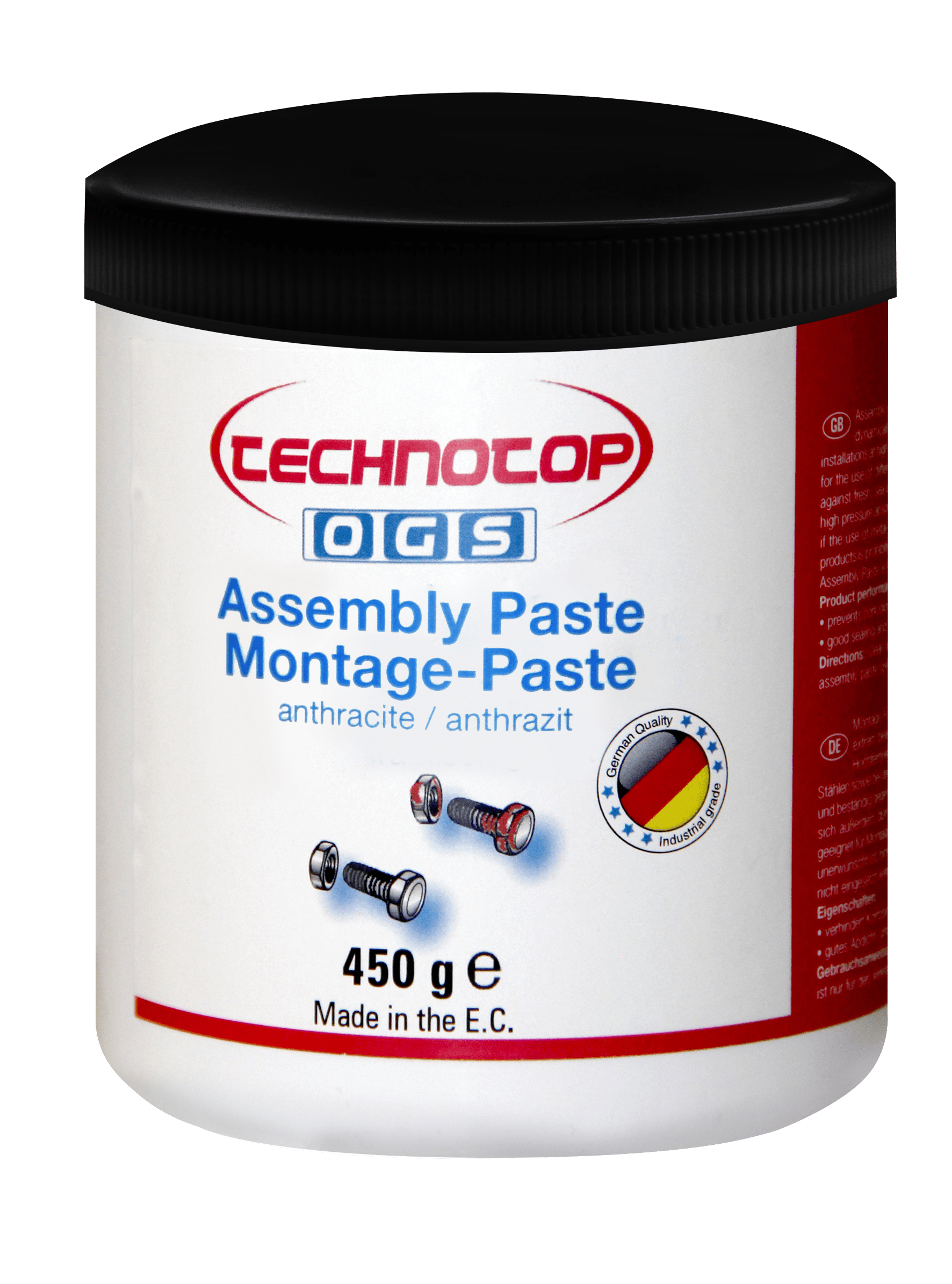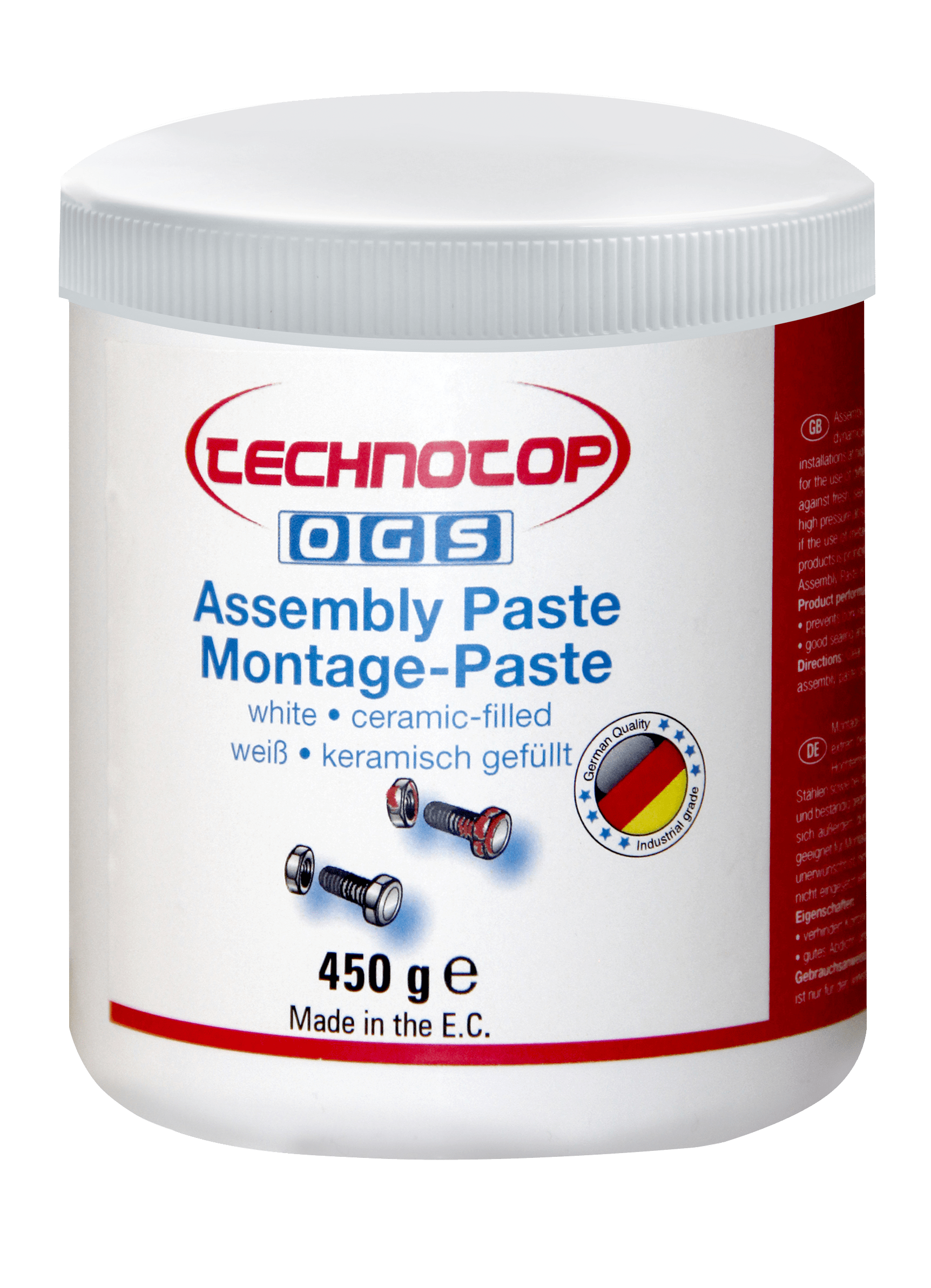Assembly Pastes-Antiseize
Assembly Paste


Assembly Pastes-Antiseize reliable protection against corrosion seizing and cold welding Assembly Paste is used as a protecting, separating and lubricating agent for highly stressed parts. Ideally compatible solid contents and selected additives enable a wide range of usage.
Surface pre-treatment
Clean and degrease surfaces. Apply the assembly paste evenly. AS
is suitable only for assembly paste specific applications, it does not
replace pure lubricants and greases.
Processing Assembly Pastes-Antiseize
Apply a good quantity of Assembly Paste with a brush, cloth or
plastic sponge. On threads it is important that Assembly Paste is applied down to the thread root to ensure a good sealing effect. Assembly Paste
must not be mixed
Storage
Keep container tightly closed. Do not store together with oxidizing agents. Store in a dry place at storage temperature. Original container are storable for 24 months.
Technical Data Assembly Pastes-Antiseize
Basic Oil: Synthetic oil mixture
Colour: anthracite
Density at +20°C (+68°F) (DIN 51757): 1,16 g/cm³
OFW device coefficient of friction: 0,13
Friction total: 0,14 µ
Friction thread: 0,13 µ
Friction head bottom: 0,15 µ
VKA-TEST (DIN 51350) goods load: 4.200 N
VKA-TEST (DIN 51350) welding load: 4.400 N
VKA-TEST (DIN 51350) Spherical cap value (1Min/1000N): 0,5 mm
Assembly Pastes-Antiseize Worked penetration ( DIN ISO 2137): 310 – 340 1/10 mm
Sulfur content (DIN 514): <0,1 %
Water resistance (DIN 51807): 0 – 90
Pressure (DIN 53281-83): 230 N/mm²
Salt spray test: >170 h
Thermal conductivity: 0,3 W/m.K
Dielectric strength: 0,47 kV/mm
Specific resistance: 1,2 x 10^15 Ohm/cm
Temperature resistance: -180 to 1.200 °C
ISSA-Code: 53.402.71/72/73/74/75/76/77/78/79/80
